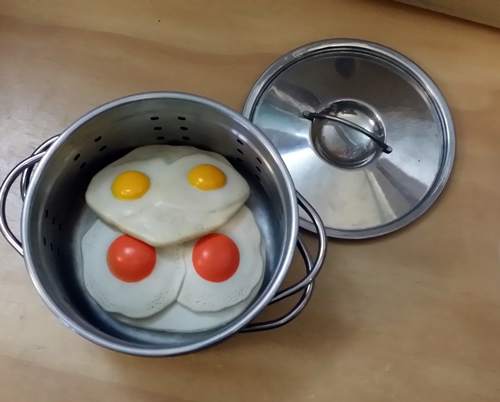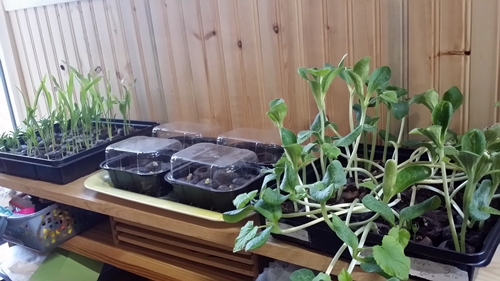I include a printed copy of our four week revolving lunch and snack menu in the handbook that I give to parents when they enroll their child. I always point out that the menu will change over time – possibly even before their child’s first day of care.
I have a current version of the full menu posted in my front entrance (licensing requirement) and the lunch menu is posted on my website because some of the parents like to check it periodically outside drop off/pick up times. I also have a printed copy on my fridge to reference when I am prepping meals and making my shopping list.
Over the years I’ve had some children, or groups of children that frequently ask “What’s for Lunch?” throughout the day. For this reason I have posted additional copies in both the main playroom and the art area. I encourage readers to check the printed menu instead of automatically expecting me to answer the question for them.
I don’t usually mind answering the question – often it is the beginning of a wonderful conversation. Occasionally it is more of a game where each of the preschoolers ask the same question over and over again leaving me to sometimes say “Same answer as I last time that question asked.” Still, this repetitive activity is wonderful for turn taking and communication skills.
I am a little more reluctant to answer the older children because I feel it is important to encourage them to seek answers instead of relying on me to provide information. Instead, I may just remind them of where the menu is posted and suggest they go check for themselves.
There are also options available for them to independently discover which menu week we are on and what day of the week it is so there is not really a need to ask these questions either. I won’t entirely refuse to answer when asked but I’m more inclined to just provide clues.
Many years ago there was a child for whom I was reluctant to answer the “What’s for lunch?” question. This child was, at home, extremely picky about what they would eat and adamantly refused to try anything new. If they knew in advance what we were having for lunch, they would obsess about it all morning, worried they may not like it, unable to focus on anything else or participate in play activities. By lunch they could have themselves so worked up that they would not be able to eat anything IF they even tried.
So, when they asked what we were having for lunch, I would reply “Protein, vitamins, fibre, sugar, fat and some dairy”. Then we would have a discussion about what their favourite foods were and we would classify those foods. At lunch time I would first Identify each menu item by its food group followed by “like your favourite food _____”.
With this approach, a group of peers who thoroughly enjoyed all foods, no pressure to clean their plate, AND no options for alternative foods, they were willing to at least nibble at what was on the menu. Over time they became far less stressed and picky about food. Sometimes they did not only clean their plate but ask for seconds too.
I still occasionally answer the “What’s for lunch?” question with “Protein, vitamins, fibre, sugar, fat and some dairy” – particularly when my preschool group has already asked that question multiple times that day. Most of my current group of children are definitely NOT picky about food at all.
When I tell them we are having “Protein, vitamins, fibre, sugar, fat and some dairy” they respond emphatically with “WE LOVE THAT!”
And it is true, they do 🙂


























